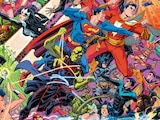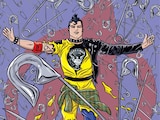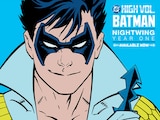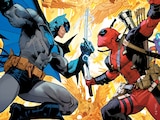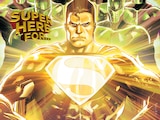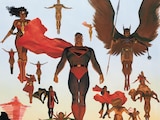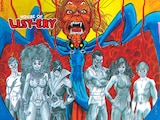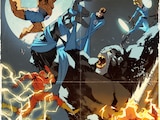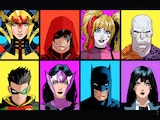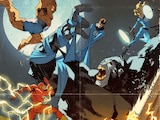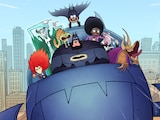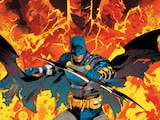New from DC Black Label, Batman/Green Arrow/The Question: Arcadia teams up three of DC’s moodiest crimefighters for a crusade against the ruling class in a loving four-issue tribute to one of the greatest to ever do it, Dennis O’Neil. Gabriel Hardman (Green Lantern: Earth One) both scripts and draws the complex, grimy drama and I recently had the privilege of nerding out with him about the comics that made us both lifelong DC fans, and how as both writer and reader, Arcadia feels like coming home.

Let’s start by talking about Dennis O’Neil. To me, Batman, Green Arrow and the Question all represent his best work in the superhero medium. So, I want to ask what Denny’s work means to you and how personal this series is.
Probably the Question series with Denys Cowan was the biggest, in a lot of ways. It started when I was in my mid-teens, and it was one of the more sophisticated books that I read, reaching beyond superhero stuff. Not only that, but he asserted a kind of influence over the book beyond just the pages of the comic. The book recommendations included in each issue were things that I would track down and read. I’ve always been somebody who looks towards the past for instruction on things and loves to find older stuff. So, tracking down the Green Lantern/Green Arrow books with Neal Adams before they were reprinted was huge for me.
I was also a huge Green Arrow fan when I was a kid. A bit of that started with the Mike Grell series, which is great and has a lot of good things going for it as far as the tone, but I think these days doesn’t maybe read quite as well. But there’s a lot about the tone that influenced me. All that stuff impacted me the most at the time when I was going from just reading comics to seriously thinking about making them. It was very influential for me, in my appreciation of comics.
What are you bringing artistically into portraying these characters who have loomed so large over your career? How do you draw them in a way that they’ve never been seen before?
As much as I talk about influence, when sitting down to actually do the work, in a lot of ways I have to push that aside. You’re moving forward. I’m not doing something that’s nostalgia bait. I’m doing something that’s influenced by a tone from that time but has every intention of moving forward. It’s contemporary, it’s not set in the ’80s.

I’m looking for some kind of evolution of the characters. Steve Ditko created the Question. Steve Ditko’s ideas about the world and the way he defined the character were dramatically different from what Denny and Denys Cowan did. Mike Grell kind of reinvented Green Arrow, and Batman’s been reinvented at different times by Denny and Neal Adams, and certainly Frank Miller. I think it’s not the job to show up and show people what they’ve seen before. I think the job is to show up and have some kind of evolutionary take on the characters, or else it’s not worth doing. That applies to both how I draw them and how I write them.
I think you would get a certain type of skeptic saying that you’ve got three masked crimefighters here who all kind of do the same thing. What do you see as the differences these characters have in approaching the same mission—if they even have the same mission?
They are all coming from ideologically different places, and that’s the core of the storytelling. Batman is someone who is a bit more personally privileged than the others are at this point. He’s coming from a place of his personal authority being the thing that drives him—his ideas about right and wrong, and the way to implement them. He’s more sympathetic to people in his financial cohort. Green Arrow has turned his back on the privilege that he grew up with, but in my book, he’s also kind of lost his way. While he was always the guy wearing his ideals on his sleeve, at the beginning of the book, he’s kind of lost that and needs to find his way back to something. The Question is all about Hub City, and Hub City has completely imploded at this point. In the past, he was this crusading journalist/commentator, but Hub City doesn’t even have local radio or TV or anything like that anymore. He’s a little bit of a dinosaur in that way, and yet he’s trying to remake himself as someone who is just about street reporting, just about telling people what’s going on in their community and fighting fights that are about his beloved city, which is coming apart.
Also, Green Arrow does not wear a mask. Everybody knows who he is. He’s not hiding anything. Batman’s identity is obviously an enormous thing for him. And the Question literally has a blank face. The masks, the identities, all play into the conflicts between these characters over the course of the book.
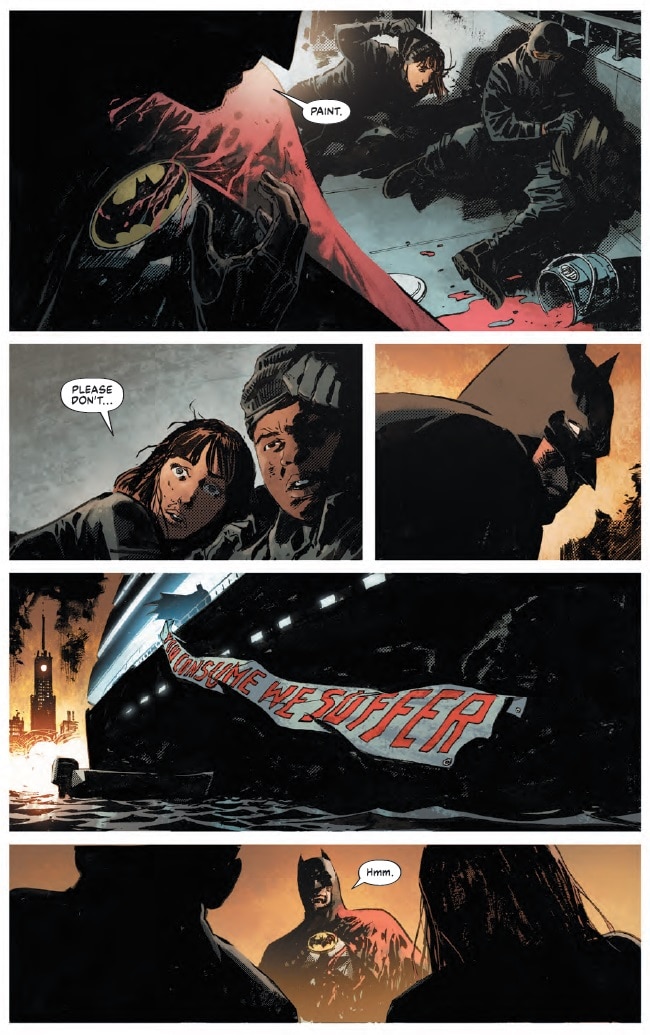
These characters have only teamed up once before, in the Fables crossover that Denny orchestrated between the annuals of Detective Comics Annual #1, Green Arrow Annual #1 and The Question Annual #1. Rather than being this big event, that was just a quiet moment that changed all of them. I wonder how you see these characters being changed by the story that’s happening here.
I’m a storyteller who believes there are beginnings and endings. I feel like a story isn’t a story unless it’s going some place. Every one of these characters, including Batman—you know, it’s a Black Label book, so it’s a little bit of a pocket universe—they’re all going to come out of it changed and with different challenges. If I’m able to do more of these books, this series will end definitively, but also have tendrils that could easily lead into other stories with different, bigger conflicts.
What opportunities does doing this series under Black Label present you with that you wouldn’t have just doing it as a main line book?
It gives me the opportunity to frame the characters in ways that support the themes that I’m talking about. If it were in the mainstream DC Universe, I would be contending with a lot of continuity that doesn’t necessarily tell the story that I’m trying to tell.
I think we should address what I believe will be the most talked about scene in this first issue: the Green Arrow hookup scene.
Oh, yeah?
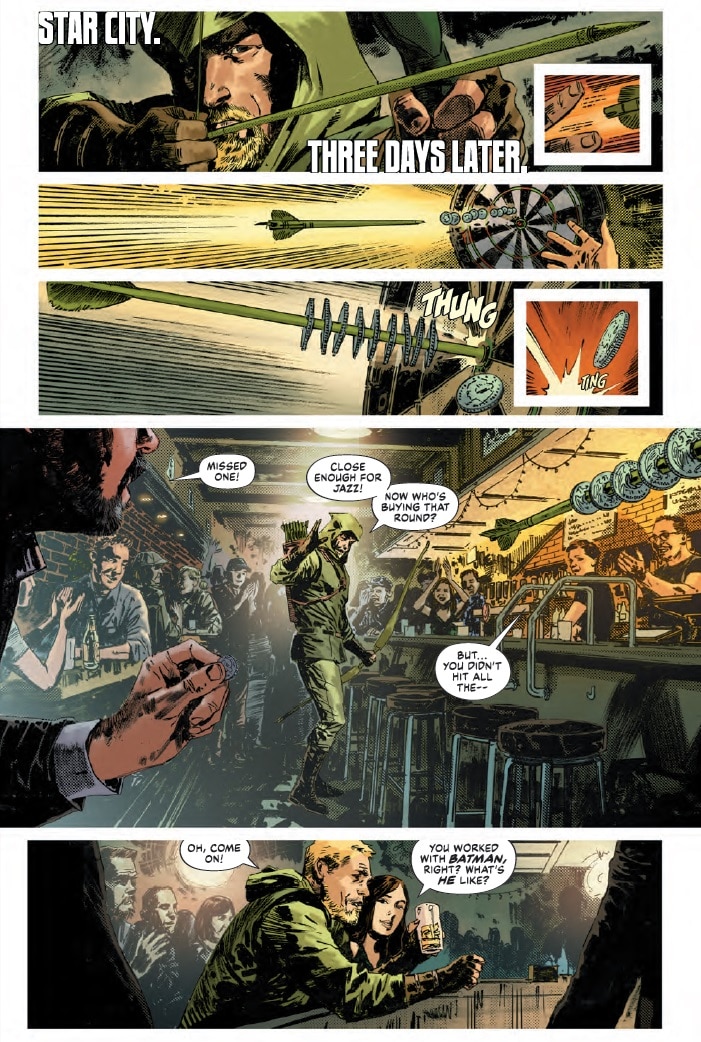
There are a lot of Green Arrow/Black Canary-heads out there. I’d like to know where this came from. It did feel very inspired by that Mike Grell period, where they’re kind of on the rocks and he’s sort of adrift.
It certainly is, to some extent, inspired by that. But I just wanted to be coming into the story where everybody isn’t in a familiar situation. The fact that he and Black Canary aren’t together at this point upends something that feels very familiar and comfortable.
You’re asking about the Black Label of it all. I want to approach these stories in a way that doesn’t feel totally comfortable. So much of in-continuity books are about delivering the familiar. Nothing against any of that, because that’s the structure of it. You need to be able to have something that works over a long period of time. You can’t break the toys all the time. I wanted to come into Arcadia with everyone not being in a perfectly recognizable spot. People go through stuff, and things change in life. I think the most direct way that I could speak to the fact that this is not a part of the continuity in that way is to show they’ve moved on. Their relationship came to a point that it couldn’t go any further. We’ll see what happens with that over the course of the book. It’s a major issue, certainly for Green Arrow.
One thing we haven’t really talked about is the actual mystery that everyone is investigating in Arcadia—this conspiracy by the super wealthy elite which involves creating a utopian society for the highest echelon. There are a lot of social themes it builds on, much like most of O’Neil’s work in the ’70s and ’80s. I want to know how, in that spirit, Arcadia speaks to the social themes that we’re experiencing now.
It was very much my intention from the beginning to do a book that was relevant to the current world around us. Regardless of my personal politics, the point, when you’re telling a story, is to challenge your own ideas and not let it become something didactic. This is about everybody having to confront their biases and their conflicts. Each of these characters is approaching this central political conflict from a different point of view. Each of them has different politics and different ideas about the world, which creates conflict and drama. That’s what excites me about it and what I’m passionate about. It’s why the political aspects play out differently with these different characters.

Something I loved about this issue was how we see an Oliver Queen where his Green Arrow persona has been discarded, a Question where his Vic Sage persona has been discarded, and a Batman whose life as Bruce Wayne is still as active as he is.
Identity, those dualities, all directly plays into it. One of the things in this, but also Green Lantern: Earth One, was that I take elements that had been sitting there so long that everybody doesn’t notice them anymore and I speak directly to them. With Green Lantern, it was about eliminating aspects of the mythos and trying to force it into something that was more about personal responsibility than being thrust into a circumstance as the perfect fearless candidate. Even if they’re heroes, they have to be conflicted, or I’m not interested.
One last question from the DC Discord community. Someone asked me a little while back when this series was announced that if Batman and Superman are the “World’s Finest,” and Batman, Superman and Wonder Woman are “The Trinity,” what do you call the group of Batman, Green Arrow and the Question? What’s their superhero team name?
Oh my god. “The Disparate Three?” “Guys Who Don’t Get Along?”
The “Let’s Not Do This Again Anytime Soon.”
“Can We Please Table This Whole Thing?”
“Can This Just Be an Email Next Time?”
I mean, look! They’ll get along more over the course of it, but it’s the fun of it, you know? I’ve always wanted to do a Superman/Batman book. I like the idea of putting the characters together and having them interact. There’s always been a sense that a team-up book is kind of a novelty. I’ve always felt like you’re putting these people together, and then they have to interact, so maybe a weird combination of characters can be good because it comes with so much built-in drama.
Batman/Green Arrow/The Question: Arcadia #1 by Gabriel Hardman with Romulo Fajardo Jr. is now available in print and as a digital comic book.


